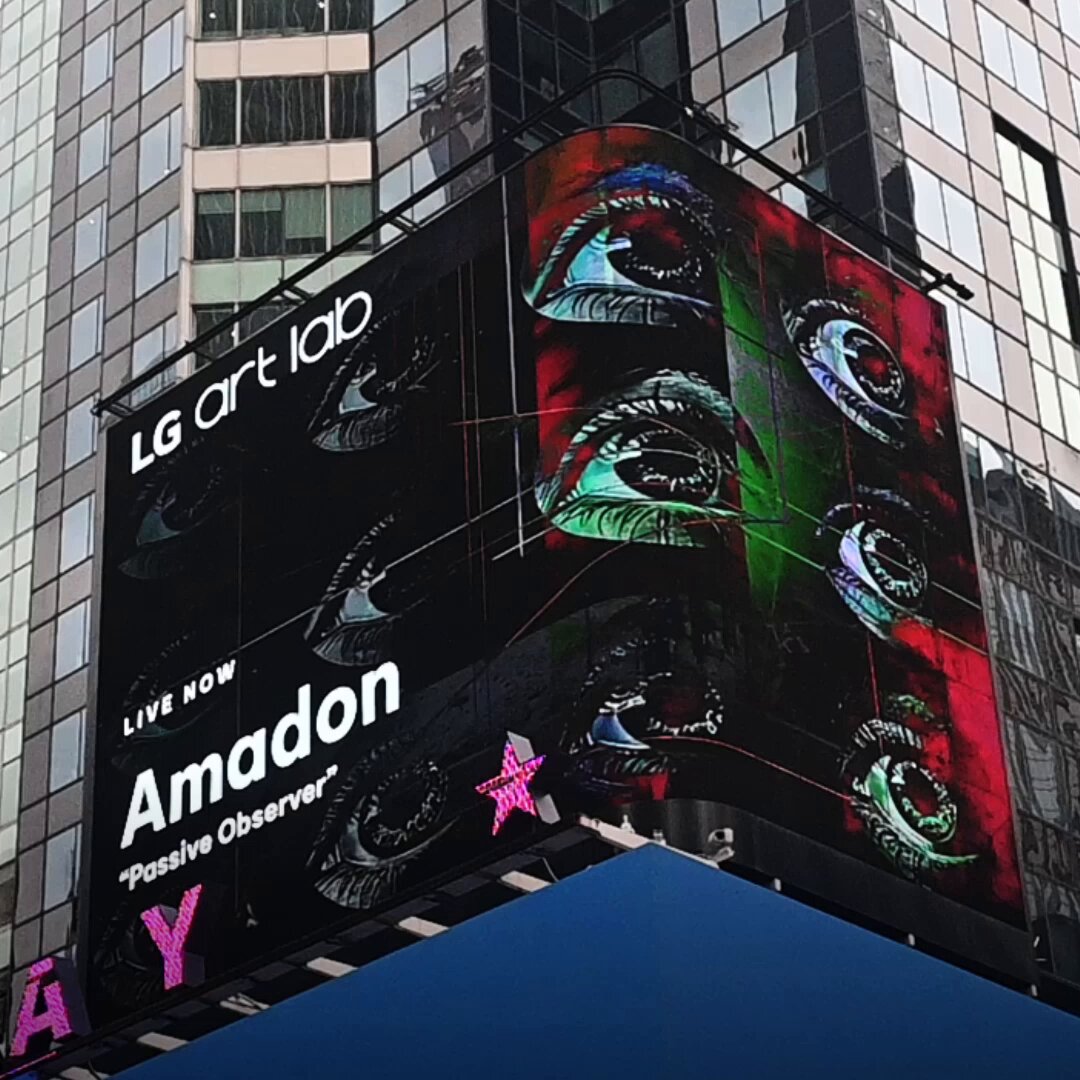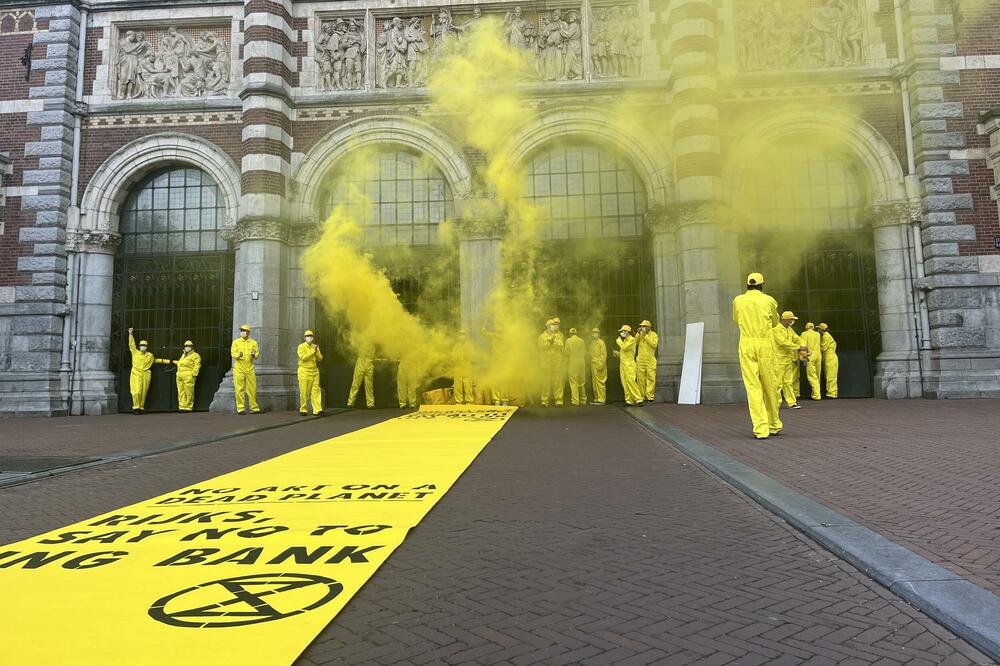This past August, LG Art Lab extended a seemingly straightforward invitation to digital artist Patrick Amadon: contribute the inaugural artwork for the launch of its blockchain-powered art platform. The opportunity, which promised exposure on 14 million smart screens and a massive Times Square billboard, might have seemed like an easy win for most artists. But Amadon—known for his provocative and dissent-driven practice—saw it as a chance to make a statement far more incendiary.
Amadon’s work often challenges the boundaries of surveillance, propaganda, and the role of art in political resistance. His previous projects have garnered attention for their subversive messages, including a piece shown in Hong Kong last year that quietly embedded support for pro-democracy protests, earning him a ban from China. It comes as no surprise, then, that his contribution to LG Art Lab, titled Passive Observer, also hides a bold secret: the Wikipedia page for “Gaza genocide” flashes briefly between frames of blinking eyes, juxtaposing the passive nature of observation with the harrowing reality of conflict.
“Everyone’s watching what’s happening to Palestinian civilians, but no one is acting,” Amadon says. His work—subtle but searing—functions as a commentary on the bystander effect in an era of global crises. “As an artist, I have an avenue to get a message out, and that’s a rare opportunity,” he adds.
The timing of Amadon’s message is particularly resonant, as the ongoing conflict between Israel and Palestine has reached a devastating point. According to Gaza’s health ministry, over 40,000 people have been killed and nearly 100,000 injured in Gaza since Israel’s response to a Hamas attack on October 7, 2023. The humanitarian situation is dire, with over 2.1 million people on the brink of famine, according to the Integrated Food Security Phase Classification, a UN-backed initiative.
The International Court of Justice (ICJ) has also been drawn into the fray, ordering Israel to take measures to ensure no acts of genocide are committed in Gaza. While the ICJ has yet to officially accuse Israel of genocide, the case—brought forward by South Africa—continues to provoke international debate. Both Israel and the United States have rejected any claims of genocidal intent.
In the art world, the conflict has ignited its own set of controversies. Major museums, galleries, and cultural institutions are navigating an increasingly fraught moral landscape, as pro-Palestine protests take place in spaces once seen as apolitical. Accusations of censorship and the stifling of dissent have added fuel to the fire.
For Amadon, this act of guerrilla protest on Times Square’s largest billboard is simply a continuation of his dedication to solidarity. His previous work, No Rioters, quietly memorialized those imprisoned under Hong Kong’s draconian 2020 national security law. The piece, displayed in a Hong Kong department store, listed the names of those detained for their involvement in the 2019 pro-democracy protests, a risky move that earned Amadon a potential prison sentence if he returns to the region.
When asked about the potential backlash he might face for his current work, Amadon, unfazed, said he is mostly unconcerned. “With these projects, security is always a concern,” he admits, recalling how his computer was infected with malware during the Hong Kong protests. But the reactions from the exile community made the risk worthwhile.
As for his latest work, Amadon remains resolute. “This is about solidarity,” he says. In the hyper-saturated glow of Times Square, where advertisements compete for the briefest glimpse of attention, Amadon’s subversive message flickers, momentarily revealing the grim realities of a world too often ignored.







